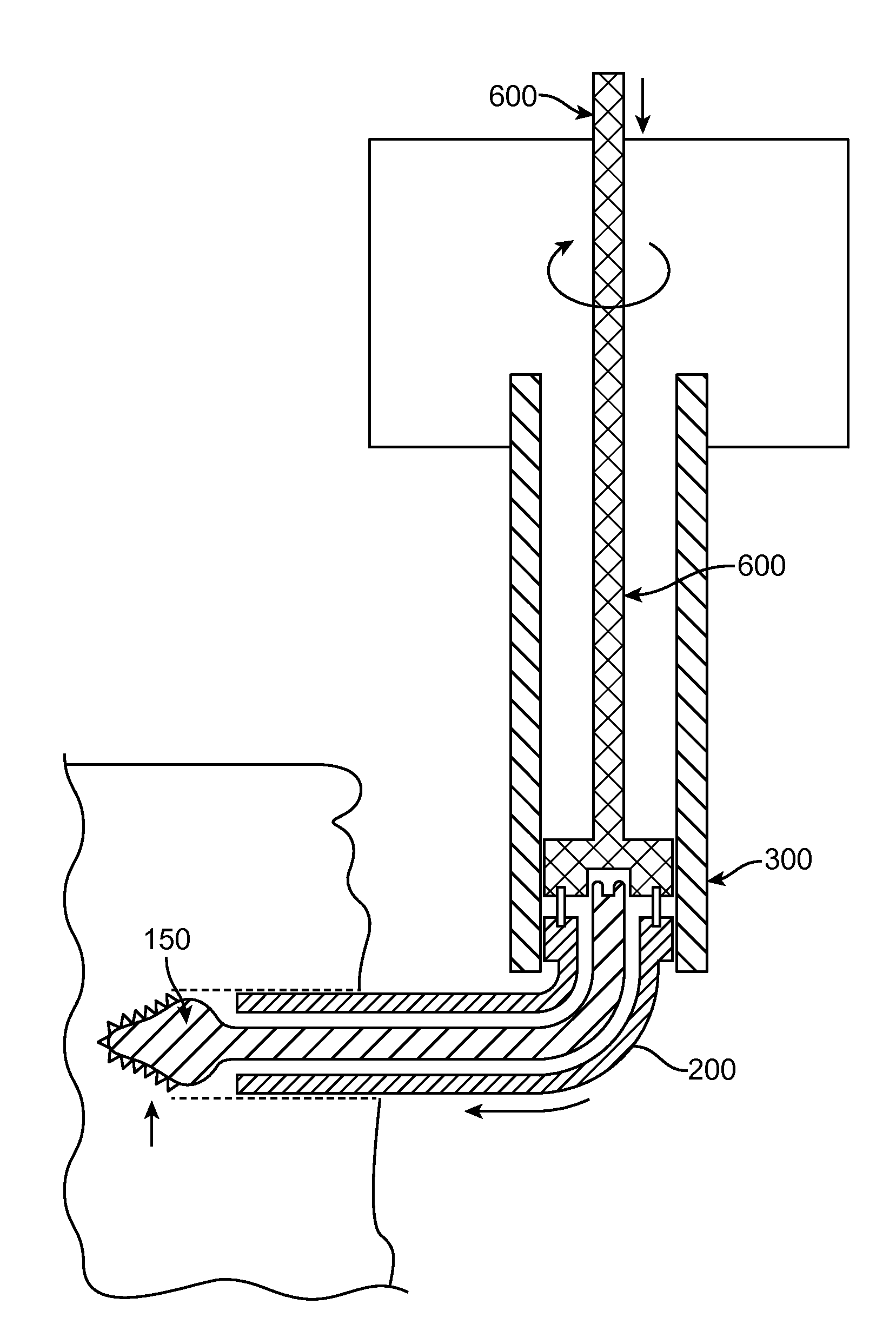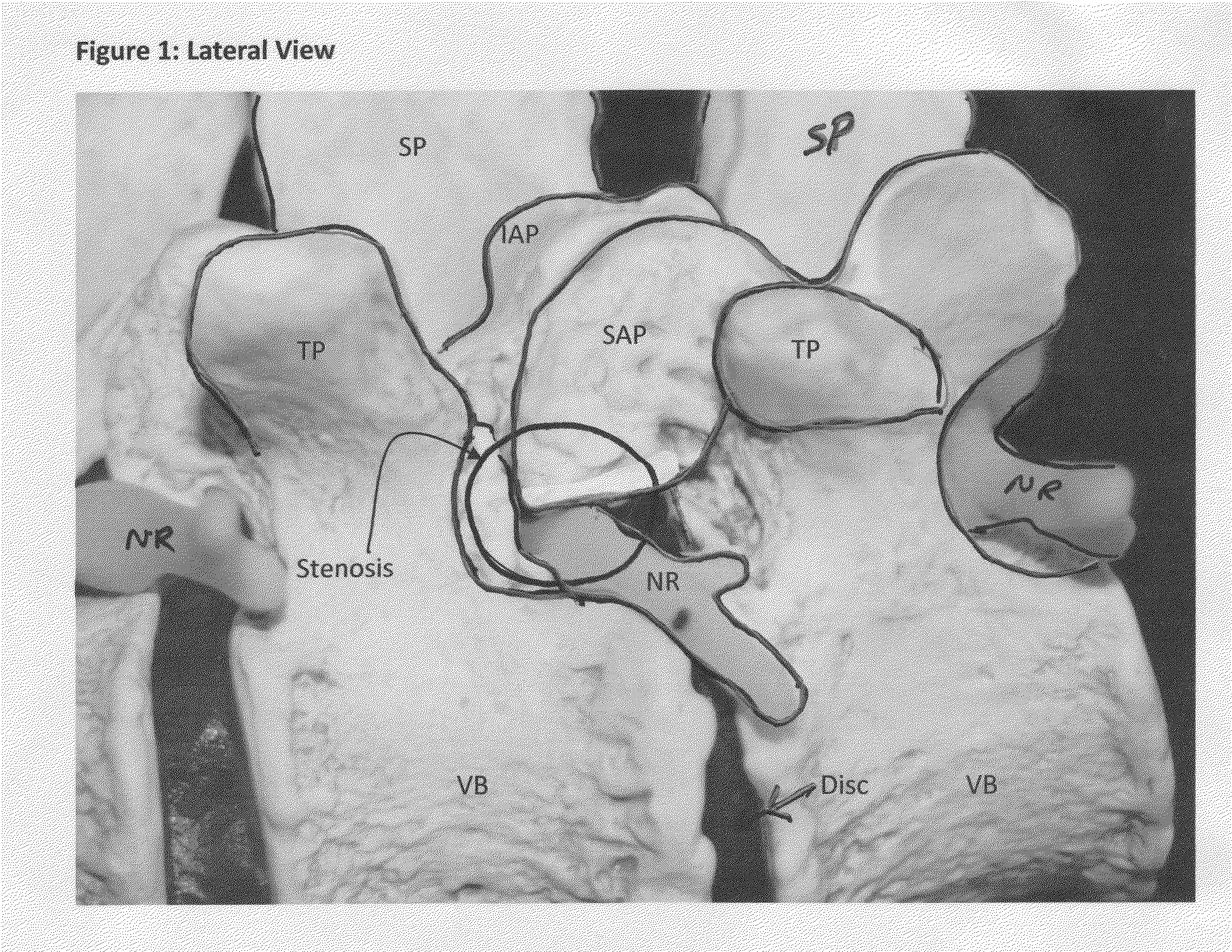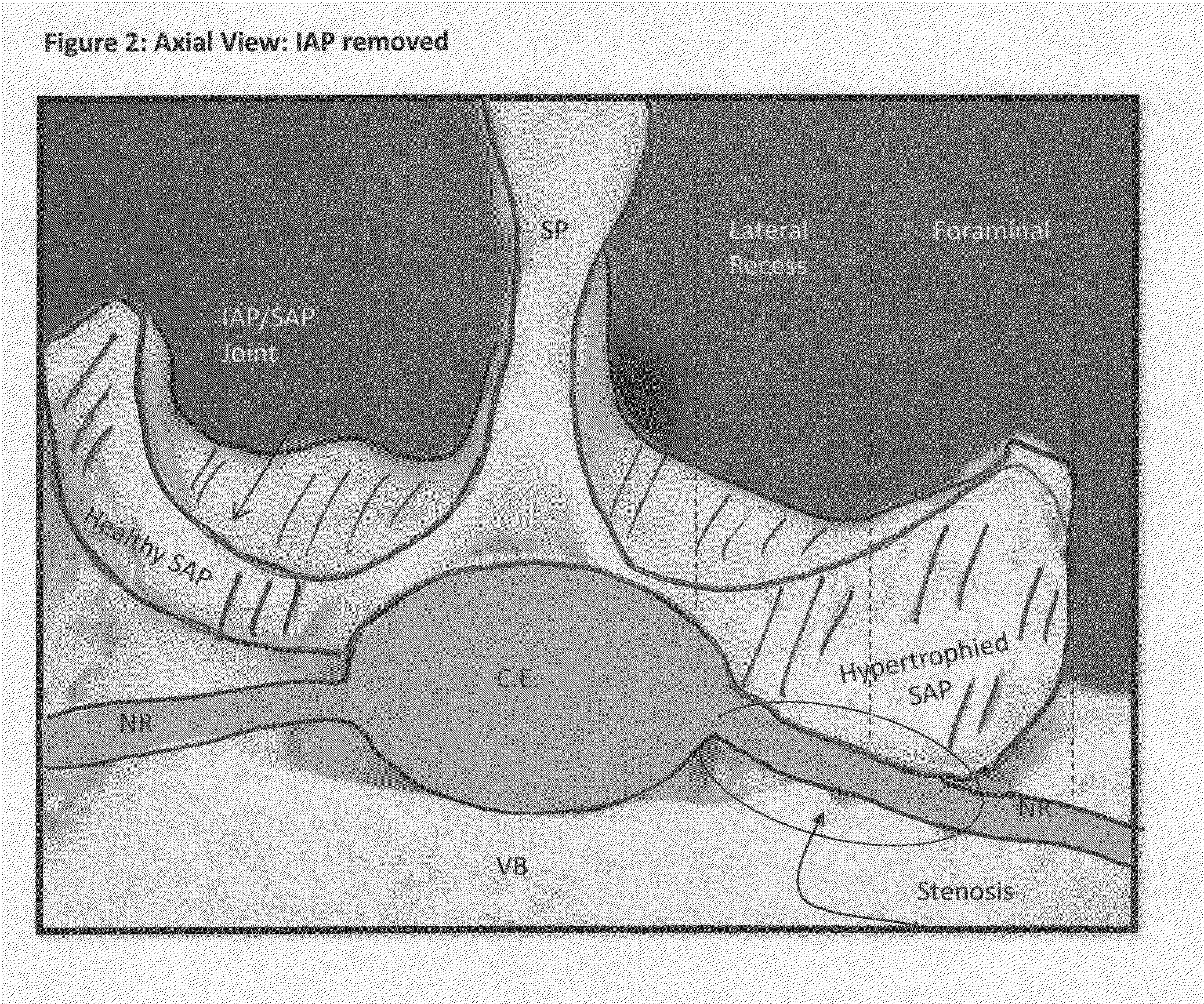Ultrasound Enhanced Selective Tissue Removal Method and Apparatus
a tissue removal and enhanced technology, applied in the field of lateral recess removal and neural foramina enlargement of the spine, can solve the problems of increased neural irritation, neural and neurovascular impingement, ischemia, accompanied by progressively increased pain, and inacceptable long-term complications and morbidity
- Summary
- Abstract
- Description
- Claims
- Application Information
AI Technical Summary
Benefits of technology
Problems solved by technology
Method used
Image
Examples
first embodiment
[0052]Once access is achieved to the targeted location of the spine, FIGS. 3 and 4 illustrate a first step of a tissue removal method of the present invention: the creation of a medial to lateral burr hole to treat lateral recess and foraminal stenosis in the spine. From a typical mid-line approach, a point 100 is located by the surgeon somewhere along the medial / cephalad aspect of the SAP. Cephalad is defined as “towards the head of the patient”, while “caudal” is defined as “away from the head of the patient”. One specific location may include (but is not limited to) the most medial intersection point of the IAP and the SAP (shown as point 100 on FIGS. 3 and 4). After this starting point is located, a tool (such as a drill, a specialized cutting device shown in FIG. 17, or any head-on cutting tool) is used to drill from the point 100 and then directed laterally either on a curved or straight trajectory. Alternatively, it may be desirable to initiate the burr hole starting point 10...
second embodiment
[0058]FIG. 12 illustrates a tissue removal technique according to the present invention. Rather than the three-step procedure described above, FIG. 12 describes an alternative procedure for removing tissue from a foramen. FIG. 12 shows an alternative method which involves inserting a cutting tool with an integrated shield, or separately delivering the shield and subsequently the cutting tool. The tools (cutting tool and shield) are placed dorsal to the dura (on top of) of the cauda equina / nerve root(s) and ventral (below) to the ventral aspect of the SAP. These devices can be inserted on the medial aspect of the SAP (point 110 in FIG. 12) and be deployed in the lateral direction, or they can originate on the lateral aspect of the SAP and be directed medially. The shield can be integrated with the cutting tools or can be separate. If the shield is separate, it would first be positioned in the spine. Once the shield in place, a cutting device would be deployed on the dorsal side of th...
third embodiment
[0059]FIGS. 13 and 14 illustrate a tissue removal technique according to the present invention. Rather than the three-step procedure described above, FIGS. 13 and 14 describe an alternative procedure for removing tissue from a foramen. In FIG. 13, the first step involves creating a hole from medial to lateral (point 100 to point 105) through the SAP, and possibly through the ventral aspect of the IAP at a slight Cephalad angle. This facilitates focusing the decompression on the tip of the SAP. In the second step (see FIG. 14), a cut is made through the bone from point 105 to point 101. Once the hole (shown in FIG. 13) and cut (shown in FIG. 14) have been performed, the “slice” of tissue defined by the area ventral to the dotted line in FIG. 14 can be removed. Removal of this “slice” will relieve pressure associated with the ventral aspect of the SAP pressing on the neural structures in the foramen or lateral recess. The terms “cut” and “hole” can be used interchangeably herein, thou...
PUM
 Login to View More
Login to View More Abstract
Description
Claims
Application Information
 Login to View More
Login to View More - R&D
- Intellectual Property
- Life Sciences
- Materials
- Tech Scout
- Unparalleled Data Quality
- Higher Quality Content
- 60% Fewer Hallucinations
Browse by: Latest US Patents, China's latest patents, Technical Efficacy Thesaurus, Application Domain, Technology Topic, Popular Technical Reports.
© 2025 PatSnap. All rights reserved.Legal|Privacy policy|Modern Slavery Act Transparency Statement|Sitemap|About US| Contact US: help@patsnap.com



